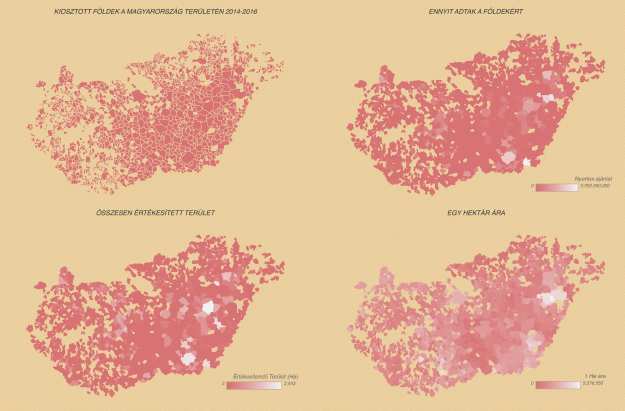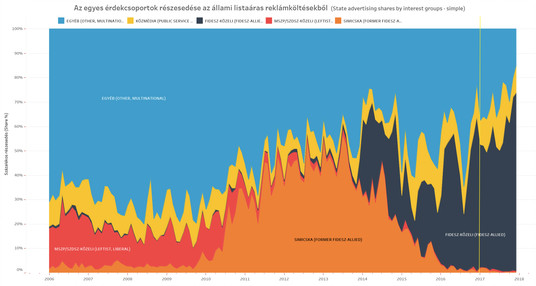In Hungary, not-for-profit news site Átlátszó has launched a full-time data team to create a wide range of data visualisations and data-driven stories. Amanda Loviza spoke to data journalist Attila Bátorfy about his plans to have Átló raise the quality of data journalism in Hungary.
Átlátszó was created in 2011 as Hungary’s first crowd-funded independent investigative news site, with a stated goal of holding the powerful accountable.
Data journalist Attila Bátorfy joined the site two and a half years ago. It was not long before he told editor-in-chief Tamás Bodoky that the site needed a whole separate team to produce higher quality data visualisations.
“I’m not enough. Simply, I’m not enough.”
It took two years and raising 60,000 euros in funding, but the one-year pilot of Átló began last month (November 2018), with Attila as head of the team along with one full-time developer, one full-time graphic designer, and a small network of freelancers to help with scraping, data collection and organization.
Expanding the use of data in Hungary
The majority of the media industry in Hungary is owned and controlled by pro-government oligarchs. Átlátszó’s data journalism projects have focused on exposing corruption within the government.
“The space for independent journalism is shrinking, step by step, in Hungary.”
Attila and Átlátszó journalists spend time traveling the country and educating journalists about accessing public information, using mobile tools and hunting fake news.
But with Átló, Attila seeks to reach new audiences with a wider range of data journalism.
In its first few weeks, Átló has published visually-driven stories about the history of cemeteries and burials in Budapest, and compared the size of Hungarian cities from 1780 to 2018.
Attila hopes to popularise ‘digital humanities’ in Hungary, helping the public explore history, science and cultural studies through data projects.
Open data journalism: “It’s important to be accountable and transparent as journalists.”
Átlátszó’s biggest data story was published in late September, exploring the use of a private jet and luxury yacht by Prime Minister Viktor Orbán and others in the Hungarian political elite. At the bottom of the page, readers find a list of each data source used for the investigation.
The data behind any story must always be shared, Attila said.
- Listen: Attila Bátorfy discusses importance of data transparency
“Obviously, we can make mistakes, and for me, it’s important to be accountable and transparent as journalists.”
Átló (and Átlátszó) publishes all of its data and documents online, and they note any changes made to a data set, Attila said.
If a mistake has been made, Attila said he would prefer someone find it and point it out immediately.
Building a foundation
From not knowing what data journalism was 8-9 years ago, Attila guesses that he must now have the largest library of data journalism books in Hungary.
Hungary is far behind the standards of international data journalism, Attila said, but he wants to see Átló produce work in line with major international publications.
- Listen: Attila Bátorfy describes the first time he tried to analyse a large data set
When forming Átló, Attila said the two biggest challenges were finding the financial backing and finding the right people.
It’s one thing to be a good graphic designer or a good developer, Attila said, but one must have a strong grasp of the data itself in order to produce meaningful data visualisations.
Aesthetically beautiful visualisations that are meaningful to the audience are key.
Going mobile with datavis
Having an audience that is 80 percent mobile has shifted Attila’s views on what makes a successful data visualisation.
Complex data visualisations simply don’t work on a mobile phone, Attila said.
“My thinking changed. Because I had to find out how to make data visualisation accessible for people (on) mobile phones.”
When building the Átló team, Attila decided to focus on finding a graphic designer who can make good static images, and a developer who can make simple, high quality websites for different projects.
“We know the trends, obviously, and we know that the basic standard would be that we are doing coding in D3 or Processing or Python, but it simply doesn’t work on mobile phones.”
It’s a step-by-step process, Attila said, learning which tools work best for their audience.
But he hopes that after this one-year pilot programme of Átló, they will obtain more funding and be able to continue their goals of growing data journalism in Hungary.





